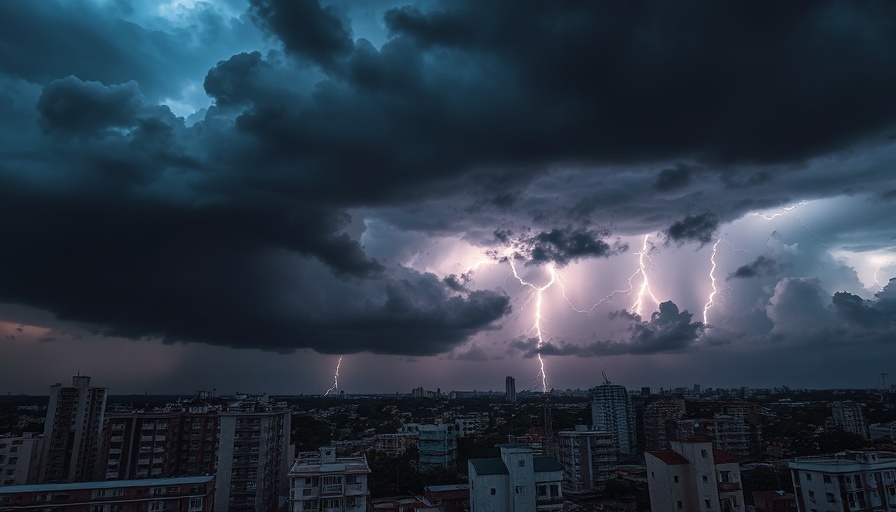
Winds of Fury: Understanding the Houston Storm's Impact
Last Thursday night, Houston experienced an extraordinary intensity of storm winds, leaving over 50,000 customers without power and causing significant chaos throughout the city. The weather event, which saw winds peak at 100 mph, was likened to hurricane conditions by local officials. Houston Mayor John Whitmire and Harris County Judge Lina Hidalgo have described the storm as an exceptionally strong event unprecedented since Hurricane Ike in 2008.
Power Outages and Recovery Efforts
As the storm ripped through the city, more than 922,000 customers lost power at its peak, forcing emergency services to kick into high gear. By around 8 a.m. Saturday, the number of customers still deprived of electricity shrunk to nearly 550,000. However, the Houston Health Department is stepping in, distributing 400 free portable air conditioning units to seniors and caregivers, emphasizing the urgency of keeping vulnerable populations cool during this recovery period.
The Human Cost: Lives Lost and the Community’s Heartbreak
The aftermath of the storm resonated tragically within the community, as seven lives were lost due to the chaos. Reports indicate that the fatalities included a man who collapsed trying to move a downed power pole and two individuals crushed by falling trees. The emotional impact of these events is palpable; one survivor shared her neighbor's harrowing experience of a tree crashing into her home. Such accounts remind us that behind the numbers are real people facing overwhelming loss.
Historical Context: A Storm Like No Other
Storms of this caliber stir memories of Houston's past weather events, with many locals reflecting on past hurricanes. References abound to Hurricane Alicia in 1983, which also brought fierce winds and destruction. Harris County officials are warning residents about risks reminiscent of historical storms, including the need for preparedness as temperatures are set to soar post-storm. This resurgence draws awareness and wisdom from decades of dealing with nature's fury.
What Residents Can Do: Tips for Recovery
In light of the storm’s aftermath, residents are urged to prioritize their safety and health. The National Weather Service advises against overexertion during cleanup efforts and recommends taking frequent breaks. As excessive heat poses additional risks with no electricity, residents should remain indoors and check on neighbors, particularly those in need. Restoration efforts are underway, but patience is essential as recovery could take days.
Potential for Future Storms: Preparing for the Next Challenge
The unpredictable nature of Houston’s weather demands a proactive approach to preparedness. This storm could serve as a crucial lesson in fortifying homes and developing emergency plans. Local authorities stress the importance of staying informed about weather updates and considering structural reinforcement against high winds. Investing in reliable communication tools and emergency kits could save lives.
The Community's Resilience: Coming Together
Despite the challenges, the storm has underscored Houston's spirit of community and resilience. The quick response of local agencies and the solidarity among residents reveal a strong network ready to support one another. Local businesses and services are stepping in to assist with recovery, demonstrating that from the storm’s devastation can rise a collective strength.
Conclusion: Take Action and Prepare
As Houston emerges from this crisis, staying informed is pivotal. The city’s resilience is a testament to the human spirit's ability to overcome adversity. Residents are urged to stay safe, look out for one another, and prepare for future weather events. By understanding the lessons from this storm, Houstonians can foster a community that is not just reactive but strategically proactive in the face of future challenges.
 Add Element
Add Element  Add Row
Add Row 



Write A Comment